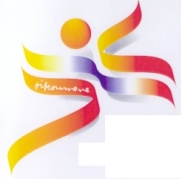
|
WCC Anniversary and Eighth Assembly
|
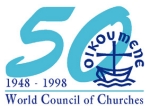
|
Feature
Service
No. 3
|
Why have an Assembly?
by Jean Stromberg
Click to this text
 en français
en français
 auf Deutsch
auf Deutsch
 en español
en español
Fifty years after the inaugural Assembly in Amsterdam, the World Council of Churches is planning its Eighth Assembly. On the theme "Turn to God - Rejoice in Hope", the Assembly is scheduled for Harare, Zimbabwe from 3-14 December this year.
Then
The reason for an Assembly in 1948 was very clear: the churches gathered to give visible expression to their search for unity. It was a first-of-its-kind event, with the heightened drama of meeting in the aftermath of a world war. Fifty years and seven Assemblies later, the reason for member churches of the World Council to hold an Assembly is less readily apparent.
Moving pictures taken at the Amsterdam Assembly in 1948 provide glimpses of a different era, from the flickering black and white film itself to the cumbersome manual typewriters in the typing pool. The days required to travel to Amsterdam and the large volumes of preparatory materials to be read reflect a time when life moved at a different pace. The excitement of international contacts, as well as the optimism which accompanied early encounters between Christians of different confessions, made a global gathering of the churches a clear first step to unity.
|
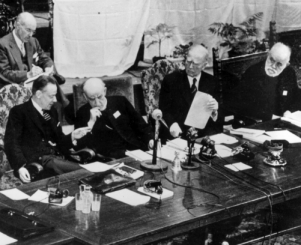
Amsterdam 1948
|
Now
In 1998, however, it is no longer unusual for Christians to pray with Christians of other confessions. International travel is part of life for an increasing number of people. Television screens bring pictures from all parts of the globe into homes. New communication technologies and information networks provide contacts and resources undreamed of a few years ago.
A Better Way?
With so many changes over these fifty years, do large global gatherings still serve a useful purpose? Is there, perhaps, an alternative to this expensive and often unwieldy gathering of persons from over 100 countries? Is it still necessary for the World Council of Churches to hold an Assembly?
I believe it is. The WCC Constitution requires that delegates elected by member churches meet in Assembly every seven years to elect a Central Committee, to review how previously adopted policies have been implemented, and to determine future policies.
But that is a constitutional answer and, correct as it is, not very satisfying. Perhaps the Constitution, dating from 1948, has not kept pace with the times.
A more compelling answer is to be found in the response to a recent proposal, emerging from the study process Towards a Common Understanding and Vision of the World Council of Churches, that the WCC stop holding Assemblies.
Member churches overwhelmingly rejected this proposal. The holding of an Assembly was seen by many respondents as touching the very raison d’être of the World Council of Churches. "It is in the Assembly," one church leader said, "in its comprehensive, though still incomplete gathering of people to worship and pray together, that we come closest to experiencing the visible unity of churches."
From the many responses received, it is clear the desire expressed in Amsterdam to gather together as a visible sign of Christian unity is still a fundamental motivation for the member churches who will meet in Assembly in 1998.
Worship
Taking part in ecumenical worship services at an Assembly has been for many a foretaste of what they imagine, or hope, Christian unity to be. For two weeks, the Assembly becomes a global community gathered in worship, using songs and prayers from many traditions and symbolic actions that transcend language. This gathered community experiences a freedom to move across the cultural, confessional and linguistic boundaries that usually define congregational worship.
"Participating in an Assembly changed my life!" is the frequent witness of people who have, as delegates, observers or visitors, been part of an Assembly’s life. These people urge that the experience should continue to be available to others.
Diversity
In addition to being a visible expression of Christian unity, an Assembly embodies the rich diversity of the worldwide church. That has not always been true. The solemn, mostly white and elderly men in clerical garb processing into the Amsterdam cathedral back in 1948, contrast sharply with the marvellous array of people from different countries and cultures, as well as the significant presence of women and, increasingly, of young adults who will be in Harare.
| This diversity can, at times, seem chaotic. Some may even long for the days when there was one "universal" theology, when recognized experts could speak authoritatively for all. This was the case for the preparation of the Evanston Assembly in 1954 when twenty-four eminent theologians worked for three years to produce the preparatory volume. There are many more voices to be listened to now! |
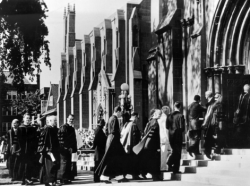
Evanston 1954
|
The rich diversity of WCC Assemblies today makes possible an inclusive and unparalleled sharing of the many perspectives of the churches worldwide. To have in the same Assembly Bible study group a Coptic Orthodox priest, a Peruvian Pentecostal pastor, a Korean lay teacher as well as others from unique contexts and with unique experiences is to begin to experience the richness of reading the Bible from the perspective of the other. No one remains unchanged in such an encounter. No one is in the "centre"; nor has all the truth. Everyone comes to realise the need for each other in order to know God more fully.
Shorthand
The recent widespread call to continue to hold WCC Assemblies is also a recognition of the influence of these gatherings through the years. The city-venues of past Assemblies - Amsterdam, Evanston, New Delhi, Uppsala, Nairobi, Vancouver, Canberra - take their place in ecumenical history as shorthand for significant reflections on a particular aspect of Christian thought or as reminder of faithful action which churches were able to take together.
|
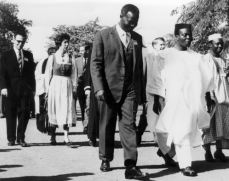
New Delhi 1961
|
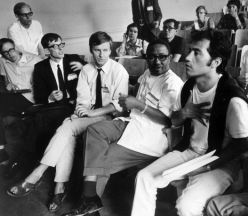
Uppsala 1968
|
The Uppsala Assembly, for example, is inseparably linked with its concern to address the sin of racism and its initiative to begin the Programme to Combat Racism. The image associated with the Vancouver Assembly in 1983 is that of the striped worship tent, aptly indicating the central place worship occupied in that Assembly, as it increasingly does today in the continuing search for unity. In the Vancouver tent, the Archbishop of Canterbury celebrated the Eucharist using, for the first time at an Assembly, the Lima Liturgy, which had emerged from the historic document which outlines wide agreement on the three traditional church-dividing issues of Baptism, Eucharist and Ministry.
|
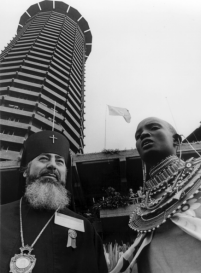
Nairobi 1975
|
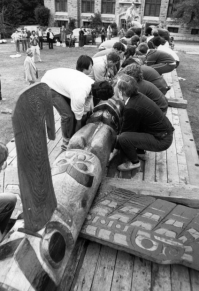
Vancouver 1983
|
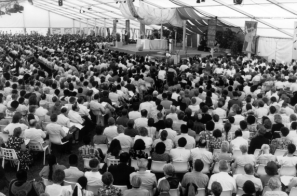
Canberra 1991
|
Assembly On-line
The new communication technologies and information networks that some anticipated might make Assemblies obsolete are instead contributing to their effectiveness. Preparing an Assembly today can be far more inclusive and interactive at every stage of planning. Local study groups, in each part of the globe, are not only a possibility, but a growing reality as global issues take shape in local contexts, aided by new information networks.
The Assembly itself does not need to be a distant event to which only a few representatives go. It can be incorporated into the life of the church through the accessibility of materials, the exchange of experience and linking of discussion groups. For this year's Assembly, those with access to the internet will be able to follow events on a daily basis via the WCC's website.
Convinced?
Are Assemblies still necessary? Has the World Council of Churches discovered alternatives?
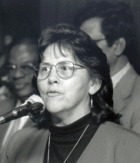 |
There is nothing presently on the horizon that offers the same potentially life-changing experience or stimulates the breadth of theological reflection. Nothing else yet offers such a clear and visible expression of the unity the churches seek. What Archbishop William Temple long ago called the "great new fact of our era" still finds its fullest expression in an Assembly.
Jean Stromberg is the Director of the World Council of Churches' US Office in New York and also Coordinator for the Eighth Assembly.
|
Information for editors and journalists
Jean Stromberg is available for further comment and interview. Radio journalists please note that for interview purposes we have an ISDN line installed in our radio studio using a CCS Codec M66I 64K.
Use of this article must credit Jean Stromberg as author. Editors are free to shorten the article if they wish but this should be acknowledged. Please send a copy of anything you publish for our records. Thank you.
Photographs to accompany this article (see list below) are available upon request. Use of the photographs is free when used with the article. Other use will attract the usual WCC fees.
Camera-ready reproductions can be obtained via Internet from our Photo Oikoumene site, or via ordinary mail from the Photo Oikoumene office at the WCC mail address below, or by sending an E-mail request to photo. When ordering, please cite the following references:
° Amsterdam 1948 (1646)
° Evanston 1954
° New Delhi 1961
° Uppsala 1968
° Nairobi 1975
° Vancouver 1983 (2383-16)
° Canberra 1991 (5050-29A)
° Jean Stromberg (6216-16)
Please also feel free to download the Assembly and 50th Anniversary logos directly from this page, or contact us if you wish us to airmail them.




 en français
en français
 auf Deutsch
auf Deutsch
 en español
en español







 Feature Service list
Feature Service list 8th Assembly & 50th Anniversary homepage
8th Assembly & 50th Anniversary homepage Press Release list
Press Release list WCC homepage
WCC homepage